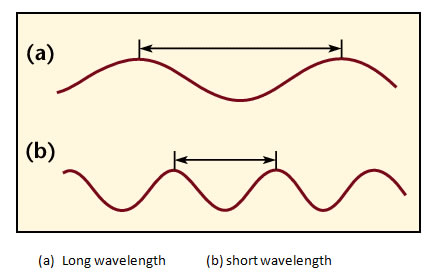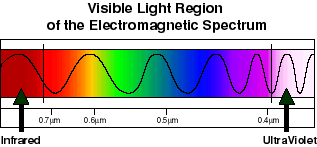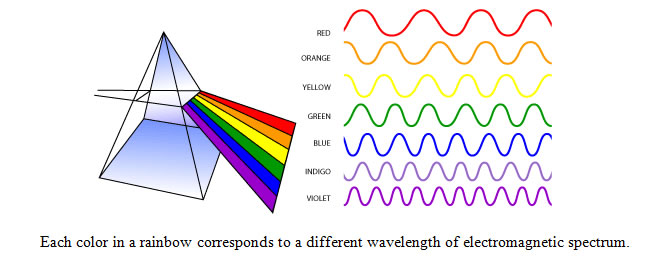Light
Grade 6 Science Worksheets
Light is a form of energy that enables us to see all the things around us. The main source of light on our planet is the SUN. Light from the sun warms the Earth, drives global weather patterns, and aids the life-sustaining process called photosynthesis. All living organisms are directly or indirectly dependent on it.
However, man is a smart animal and he was able to discover fire and generate electricity. Now we have man-made sources of light such as candles, bulbs, lamps, torches, etc. Such objects, natural or man-made, that give out their own light are known as LUMINOUS objects. Animals like fireflies, bioluminescent bacteria, and certain fish also produce light. The rest of the objects like a pencil, a table, or a wall that does not possess their own light are called NON-LUMINOUS.

Schedule a Free session to clear worksheet doubts
No credit card required, no obligation to purchase.
Just schedule a FREE Sessions to meet a tutor and get help on any topic you want!

Properties of light
Light can be described as a stream of particles traveling in a wave-like pattern in a straight path. But unlike sound waves, it does not need a medium to travel. It can travel in a vacuum or through a medium like air or glass. Light waves are a form of electromagnetic radiation (that has both electric and magnetic fields around them) just like radio waves, microwaves, and x-rays. In simple word, light can be described in terms of –
- PHOTONS – Photons are tiny elementary particles that are the basic units of all light. They carry and transmit light.
- WAVES – Photons travel in waves and have peaks and valleys. The distance between the two peaks is called a wavelength. Light waves travel through space at a speed of approximately 3 x 106 m/s.
Components of sunlight
Sunlight comprises of three main components –
- Infrared light – Most of the sunrays are infrared radiations. We cannot see them but we can feel them as they are heat producing, hence, also known as heat radiations. They have the longest wavelength.
- Visible light – The visible light, as the name suggests, is visible to human eyes and they have wavelengths between 0.4-0.8 micrometers.
- Ultraviolet light – Ultraviolet radiations comprise of around 10% of the sun rays. They are invisible to us but some insects like bumblebees can see them. They help in the production of Vitamin D in our body. Too much exposure to UV rays may cause skin tanning, burning and increases the risk of skin cancer. They have the shortest wavelength.


Visible spectrum
Visible Light is composed of 7 different colors – violet, indigo, blue, green, yellow, orange and red (VIBGYOR). The color of the light depends on its wavelength. For example, violet color has the shortest wavelength and it increases with indigo, blue and so on, with red color having the longest wavelength. When light waves of all colors travel together, they appear white.
When white light is passed through a prism, the constituent waves bend by different amounts and we see the separated colors. This phenomenon is called dispersion. During the formation of a rainbow, each suspended droplet of water in the air acts as a prism giving us one of the most beautiful phenomena in nature.
Personalized Online Tutoring from eTutorWorld
eTutorWorld offers affordable one-on-one live tutoring over the web for Grades K-12, Test Prep help for Standardized tests like SCAT, CogAT, MAP, SSAT, SAT, ACT, ISEE and AP. You may schedule online tutoring lessons at your personal scheduled times, all with a Money-Back Guarantee. The first one-on-one online tutoring lesson is always FREE, no purchase obligation, no credit card required.
For answers/solutions to any question or to learn concepts, take a FREE TRIAL Session.
No credit card required, no obligation to purchase.
Just schedule a FREE Sessions to meet a tutor and get help on any topic you want!
How do we see an object?
An object is visible to us either because it gives off light or because it bounces off light that falls on it. The process of bouncing off light from the surface of an object is known as the REFLECTION of light. For example, the Sun gives off its own light, and hence it is visible to us. The Moon, on the other hand, is visible to us as it bounces off the light from the Sun that falls on it.
How do we see colors?
Objects are classified into opaque, translucent and transparent depending upon their behavior with light. An opaque object does not allow light to pass through it. It reflects most of the light that falls on it. When we look at a red apple, the wavelengths of the reflected light determine the color we see on it. Most of the wavelengths reflected in this case equal to that of the wavelength of the color red. These reflected parts of light reach our eyes and special cells present in them called cone cells. The cone cells detect them and send a signal to the brain, where it is processed and interpreted as RED.
When objects like glass or water do not reflect or absorb much light and allow most of the light to pass through it, it is known as transparent. Objects that allow some light to pass through it but are not completely see-through, are known as translucent. Some plastics, frosted, and stained glass are some examples.
What happens when we block a light?
Ever seen a dark area walking with you on a sunny day? This area is formed as a result of blocking the sun rays from reaching the ground with your body. Whenever an opaque object (or a translucent object) is placed between a source of light and a surface, it casts a dark image that we call a SHADOW. Try out patterns on the wall with your hands using a torch in a dark room. It’s fun.
Shadows cast by the Sun vary in shape depending upon the time of the day. We see long shadows during dawn and dusk when the Sun is the lowest in the sky. The shadows are shortest at midday when the Sun is highest in the sky. Ancient Egyptians used this concept to determine the time of the day using sundials.

Check Point
- Objects that allow light to pass through them completely are known as _____.
- A ______ can split white light into 7 constituent colored rays.
- Name the three main components of sunrays.
- Too much exposure to ____ rays can cause skin cancer.
- The elementary particles that form the basic unit of light are known as ______.
Answer Key
- transparent
- prism
- infrared, visible and ultraviolet rays
- UV
- photons
Schedule a Free session to clear worksheet doubts
No credit card required, no obligation to purchase.
Just schedule a FREE Sessions to meet a tutor and get help on any topic you want!
Learn more about Scientific Method and other important topics with 7th Grade Science Tutoring at eTutorWorld. Our expert science tutors break down the topics through interactive one-to-one sessions. We also offer the advantage of customized lesson plans, flexible schedules and convenience of learning from home.
Pricing for Online Tutoring
| Tutoring Package | Validity | Grade (1-12), College |
|---|---|---|
| 5 sessions | 1 Month | $124 |
| 1 session | 1 Month | $25 |
| 10 sessions | 3 months | $239 |
| 15 sessions | 3 months | $354 |
| 20 sessions | 4 months | $449 |
| 50 sessions | 6 months | $1049 |
| 100 sessions | 12 months | $2049 |
6th Grade Free Worksheets
- Inquiry process
- Nature of Science
- Scientific Inquiry
- Inquiry, Analysis and Problem Solving
- Ethical Practices
- Science and Society
- Biotic and Abiotic Factors
- Impact of Organisms
- Adaptation
- Spheres of Earth
- Natural Resources
- Environmental Issues
- Conservation of Earth
- Understanding Technology
- Abilities To Do Technological Design
- Structure of Earth
- Solar System
- Rocks and Fossils
- Earth Systems
- Plate Tectonics
- Evolution
- Magnetic Field of Earth
- Geologic Time
- Materials and Processes That Shape a Planet
- Astronomy
- Ecology
- Energy
- Kinetic and Potential Energy
- Energy Transfer
- Matter and its Structure
- States of Matter
- Physical and Chemical Changes
- Force and Motion
- Electricity and Magnetism
- Wave Interactions
- Sound
- Light
- Introduction to Life Science
- The Origin & History of Life On Earth
- Plant and Animal Cells
- Parts of a Cell
- The Cell Cycle
- How Living Organisms Get Energy
- Classification of Organisms
- How Plants Grow & Reproduce
- The Human Respiratory System
- The Human Cardiovascular System
- The Human Digestive System
- The Human Endocrine Systems
- The Human Nervous System
- The Human Muscular System
- The Human Skeletal System
Images Credit:
https://onecluecrossword.org/en/id-232.html
https://www.asu.edu/courses/chm233/notes/conjugated/conjugatedRL2/332antibonds.html
https://www.chem.fsu.edu/chemlab/chm1045/estructure.html
https://www.pbs.org/wnet/nature/blog/shadow-season/


